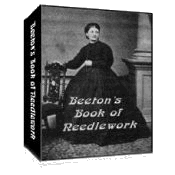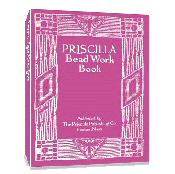[]Subscribe To This Site
Persian Embroidery
Persian Embroidery receives its name entirely from the character of the patterns and the colors selected in working them. Rich Oriental hues in great variety are combined in one design, and no effort is made to shade, or to follow the colors of nature. The work is purely conventional. There are no rules to be given regarding the stitches to be used, as any stitch which is adapted to the form of the design may be chosen; The Kensington, Satin and Outline Stitches are oftenest used.
A Little History
Victorian Persian Embroidery
Return to top of Persian Embroidery page.
Return to Types of Embroidery
Return to Home page.



 433 pages!
433 pages!

